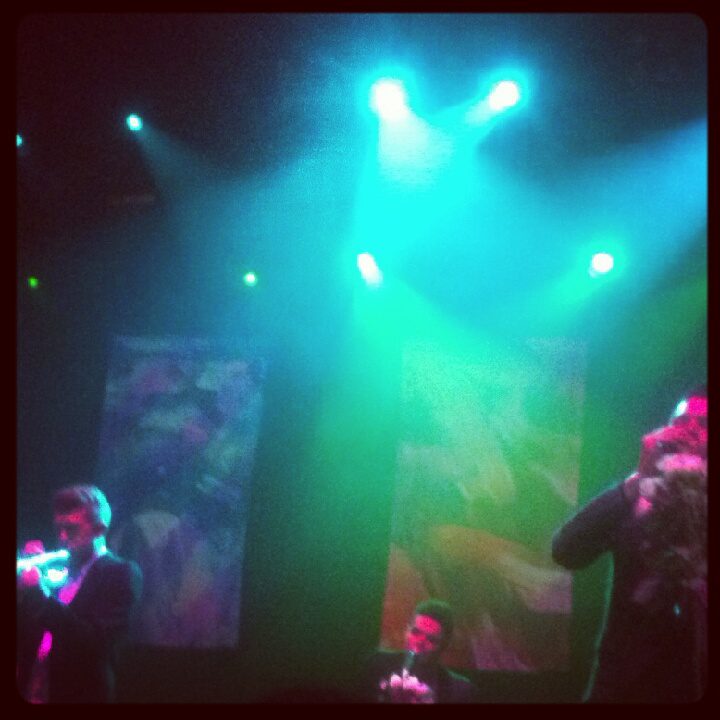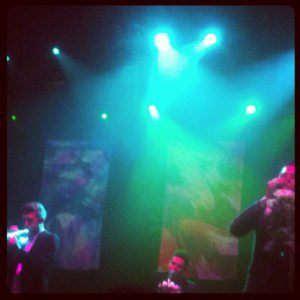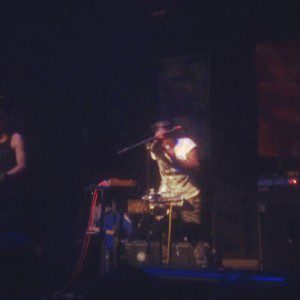PREMIERE: Ace of Wands “Float The Flood”
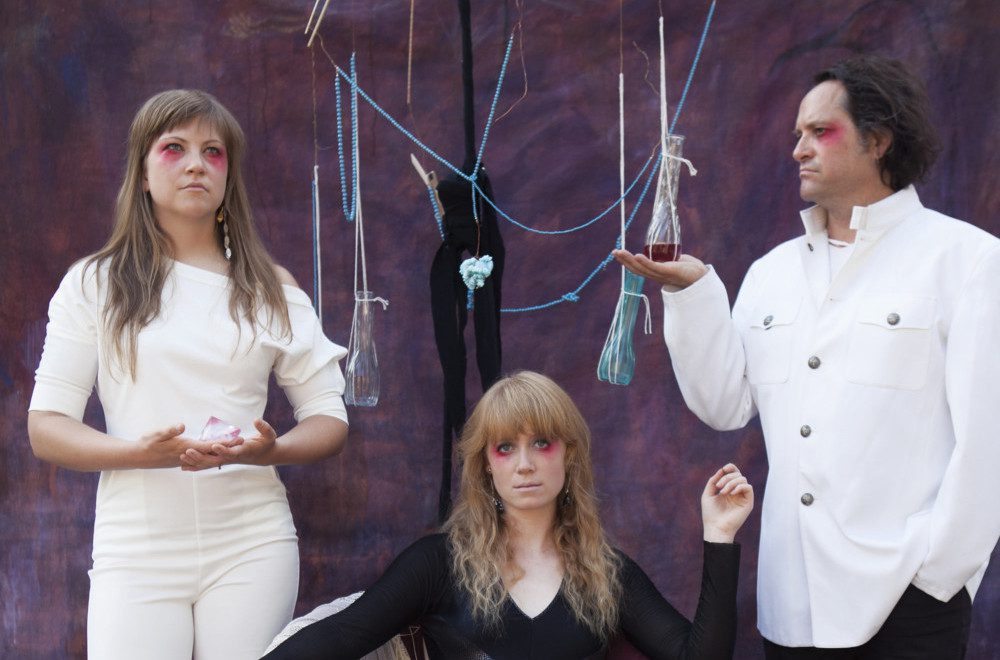
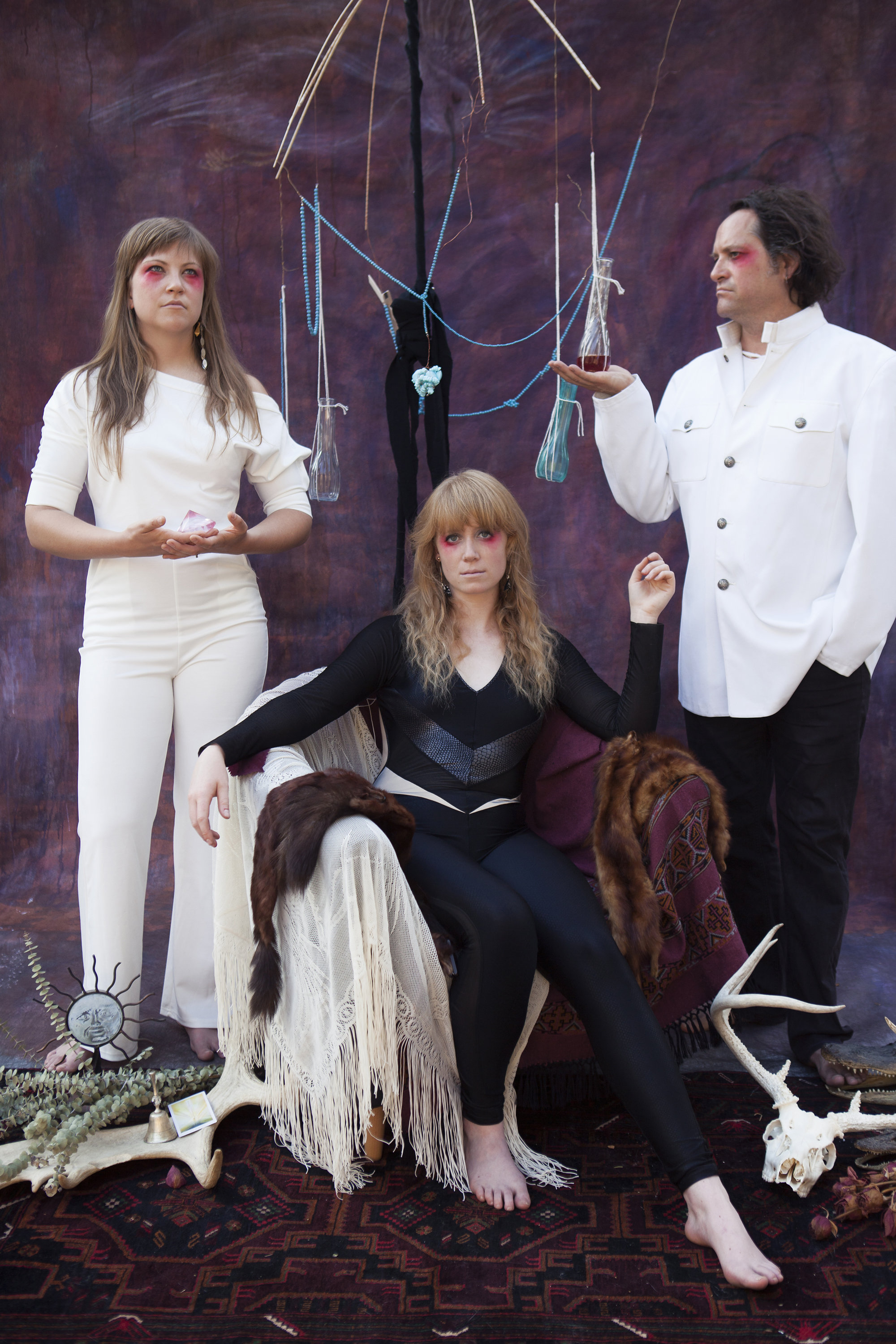
On the minor arcana tarot card from which the Toronto-based band Ace of Wands take their name, a hand reaches out from a cloud to present a flowering branch, signifying inspiration, power, creation, beginnings, and potential. It is with this offering in mind that Lee Rose, the woman behind both the music and the visual storytelling that accompanies it, prepares to release her debut EP 10,000 Feet this Friday. Amplified and enriched by her bandmates, Anna Mernieks (of Beams) on guitar and backing vocals and Jody Brumell (of SHANKS) on drums, the songs on the EP feel more like epiphanies or spells, capable of conjuring expansive visions.
Their newest track, “Float The Flood,” follows the cinematic flair of the band’s previous releases; in Ace of Wands’ music, nature becomes a main character, helping to create a physical space for their ominous, multi-layered sound. In their music videos, forests are seemingly without end, lakes never hit a horizon, and the sky looms above, eternal. Rose has provided art direction for each of these clips, cementing a potent image and creating a thematic through-line to the work. With its jangling guitar and harmonic incantations, “Float the Flood” documents the twisting turmoil of exorcising inner demons.
We spoke with Lee Rose about growing up in the wilds of Canada, how she approaches art direction for her videos, and where sustainability fits into her ethos as a musician. Listen to “Float The Flood” below.
AF: Tell us a bit about your upbringing in Toronto. What did you grow up listening to?
Lee Rose: I grew up in the neighborhood of Parkdale in Toronto. I would say my dad is my biggest musical influence. He is a musician and had an enormous record collection, so I was constantly surrounded by music. I have strong memories of listening to Nirvana and dancing around as a 3-year old. But we listened to all kinds of music – The Fall, Randy Newman, Neil Young, The Ronnettes, Bonnie Raitt and Tom Petty were all staples. My dad also worked at a drop-in center in the neighborhood called PARC – it was a community space primarily for homeless people and psychiatric survivors needing support, and music was a big part of his time there. I have memories of going to PARC to watch the open stages, and hearing my dad write songs about poverty in the city and the stories of the PARC members he worked with. It was a very formative experience for me.
AF: At what age did you start writing your own music?
LR: I started writing lyrics to songs about six years ago, but I have been writing melodies for as long as I can remember. I started a band with my brother Graeme called Rival Boys when I was 17; he did all the lyric writing and I did the singing. I taught myself how to play bass and made up bass lines. But the lyrical poetry has really just started flowing out of me more recently it feels like. I find lyrics are such a key element to a song and I admire so many other songwriters for their poetry. For a long time I was very self-conscious of what I was writing and didn’t feel safe sharing it. I have gotten more confident as I’ve gotten older I guess.
AF: Ace of Wands’ music has an epic, cinematic feel to it. Have you always been drawn to those kinds of lush, layered sounds?
LR: Absolutely! I am a classically trained violinist, and have spent a lot of time playing in orchestras. I have a love for the huge sounds you can achieve with dozens of players, and it’s been fun to experiment with creating lush sounds (that are similar in intent) with a three-piece band. I love layering effects and vocal harmonies to really transport the listener to whatever world I am writing about
AF: In your videos for “10,000 Feet” and “Grown From Good,” nature is focal point. Are these landscapes in your mind when you’re writing?
LR: Yes, for sure. I have such an affinity for natural landscapes, and while I live in the city I always find another kind of peace in nature. I am a gardener when I’m not playing music, so soil and plants and water are always on my mind. They invariably make it into the songwriting!
AF: How do you scout for locations?
LR: Well, mostly we choose places where we can safely film! But I have spent a lot of time in swimming in Georgian Bay and surrounding areas, so it has made it into both videos so far.
AF: You lead art direction for your videos, as well as construction on the key design pieces (like the recycled fabric train in “Grown From Good”). Is sustainability something you incorporate often into your mixed media artwork?
LR: I try to create as little waste as possible when I make things for the videos. But it’s hard! Everything leaves an environmental footprint it seems… but I do my best to use recycled materials. I’m also really interested in having themes that carry through my projects, so that pieces can be reused and repurposed multiple times. We also have had Ceremonial burnings of props in bonfires… maybe not so good for the ozone but it looks cool and disappears! Ha.
AF: Your new single, “Float the Flood,” is yet another song that for me, drew up intense visuals: images of whales lurking beneath the surface of the ocean, boats on fire. Can you give us some insight on how this song was constructed and what the backstory is?
LR: I was going through a really difficult time in a long term relationship when I wrote the song, and was feeling suffocated by having to express hard emotions. I was starting therapy to help with my depression and for the first time was really seeing all the ways I hate myself. I can be very punishing. I was feeling a lot of guilt and anger and was taking a lot out on my partner. I kept seeing images of myself as a fog, a flood and a mess of endless water and murk. I was trying to express how lost I was in the expanse, and how it was effecting the people I love.
AF: Are you at work on a new video?
LR: Yes we are! We are starting to create art for our next video called “Lioness.” This video will introduce our third band member Jody (drums), and will be part performance video. It will incorporate landscape shots of the fall foliage I hope! I wanted to transition between seasons from video to video as well.
AF: The digital download for “Grown from Good” was printed on paper embedded with wildflower seeds and even came with a glass jar of soil. “Float the Flood” also has a creative twist in terms of its download. What can listeners expect?
LR: “Float the Flood” will be available as a digital download, accompanied by a balsa wood glider plane. I’m really interested in the idea of creating ways for our audience to interact with our music beyond just listening. I want to make merch that turns the music into participatory experience, and the idea of ‘play’ is a central part of that. I wanted to make something that would inspire people to literally go outside play. I have found it harder and harder to get our music to people (and actually have them listen to it!) so in trying to think outside the box I found myself drawn to ideas where the music becomes almost secondary to an experience that could facilitate a listeners own personal creativity.
Ace of Wands release 10,000 Feet EP August 17th. If you’re based in Toronto, don’t miss the band’s show at The Horseshoe Tavern on August 18th.

